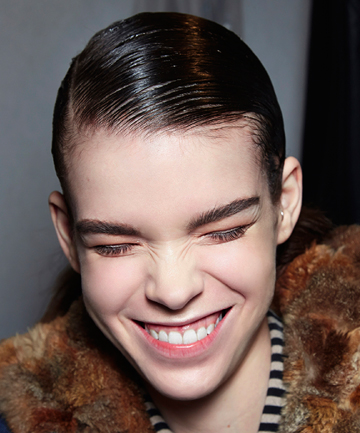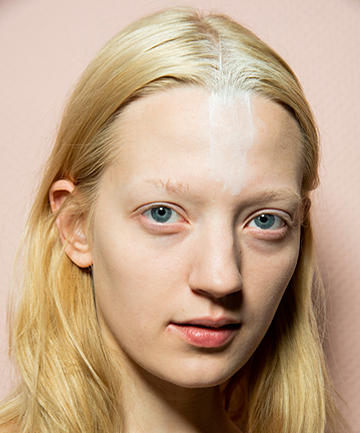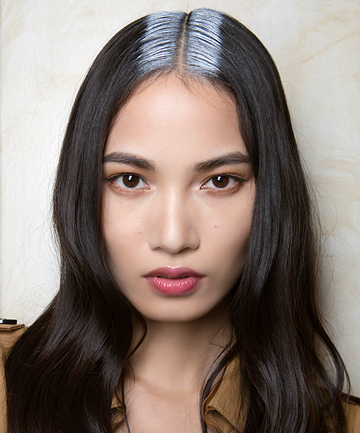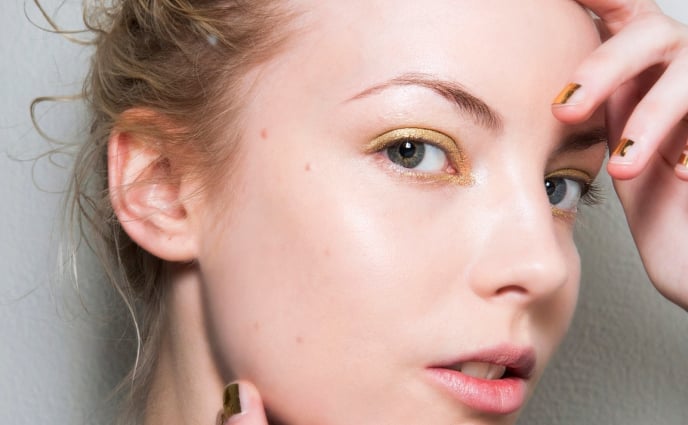When we don't have the time and/or energy to wash our hair, we can always count on our trusty dry shampoo to keep us from going out in public looking like a greasy mess. The hero product has saved many a bad hair day situation, so the idea that it could actually be hurting our hair and scalp is something we simply don't want to believe. Read on as we investigate the pros and cons of dry shampoo, once and for all.
Image via Imaxtree
If you've ever used dry shampoo, you know that it magically absorbs excess oil and sebum from the scalp and hair. According to Philip B, founder of Philip B. Botanical Hair Care, dry shampoos are basically a "spray starch" made from different starch products. They do not have cleansing agents. This is key. "Do not be mistaken by the word 'shampoo' because dry shampoos are not intended to actually clean your hair, scalp or skin, and they do not replace cleansing," he says.
Dry shampoos are meant to extend the time between traditional cleansing/shampooing by refreshing hairstyles. After dry shampoo is applied to roots and brushed out, the product helps disperse natural oils throughout hair. This gives strands extra body and makes hair look cleaner.
Image via Imaxtree
Chi Haircare's Cynthia Diersen says that anything used in excess can be harmful to hair. However, it's totally fine to use dry shampoo occasionally between washes. The trouble comes with overuse, says Michelle Blaisure, a certified trichologist with Bosley Professional Strength. If dry shampoo is used too frequently and the product residue isn't removed with wet shampoo, it can result in scalp and hair problems.
The residue from dry shampoo, styling products and pollution can trap bacteria, which can cause scalp irritation, hair follicle inflammation, dermatitis and hair loss, especially for those of us with fine hair or sensitive scalps. To prevent problems, Blaisure suggests using a product that doesn't leave behind a lot of residue, like Bosley Professional Strength Bos-Volumize Bamboom Volumizing & Cleansing Powder, $24.99. It uses organic bamboo charcoal and tapioca starch to absorb grease and impurities.
Just like over-cleansing the skin, using too much dry shampoo can actually result in more oil production, says Alyssia Dotson of Alterna. Excessive oil combined with hair follicles not being able to breathe can lead to a very unhealthy environment for hair to grow. Not only that, but dry shampoo buildup can dull hair's luster, says Dr. Anna Guanche, board-certified dermatologist and celebrity beauty expert.
Image via Imaxtree
We typically choose dry shampoos based on how they feel, smell and make our hair look, but it's important to look at the ingredients before making a final pick. While most ingredients are considered safe, there are some that are probably best left behind, Blaisure says. Avoid the usual sulfates, parabens, sodium chloride and sodium bicarbonate, says Biosilk ambassador Ivan Rodriguez, and get to know the following ingredients:
Starch
Starch is the main component of dry shampoos. According to Philip B., starch dry shampoos often have a high alcohol content, which is not usually an issue due to the number of oil glands in the scalp, but it can be for those with sensitive and/or dry scalps.
Talc
Talc is another popular dry shampoo ingredient. It coats hair in that unmistakable white film and can be "pretty toxic," Leila Nations of Fatboy Hair says. On top of that, talc can cause acne and irritation. There are also concerns that talc powder (and rice starch) could contain pesticide residues, Blaisure says.
Silicone
Silicone appears in dry shampoos as well as other hair products. There are some good silicones, but the category gets a bad rap because of ones that can irritate the scalp and weaken hair follicles, Philip B. says. He suggests doing a patch test and listening to your body's response to see if the product is a good fit.
Image via Imaxtree
Those with fine, thin or straight hair should be cautious when using dry shampoo. If you have ongoing scalp problems, like dandruff or dermatitis, it's best to avoid dry shampoo to help control the problems, Blaisure says.
Watch out for the aforementioned controversial ingredients and remember that moderation is key. Don't use dry shampoo as a styling aid, Dotson says. Use a sea salt spray for tousled strands and dry shampoo for managing grease.
Applying too much of anything can weaken hair follicles. Less is always more with dry shampoo, Philip B. says. "You really just want a light coating. Focus on the first few inches of hair at the roots, not directly at the scalp," he says. "Then the brush becomes the vehicle to disperse the product well and give strands that perfect Hollywood finish." Use a natural boar bristle paddle brush, like the Raincry Large Condition Paddle Brush, $115, to move the product and oils down the hair shaft.
Image via Imaxtree









